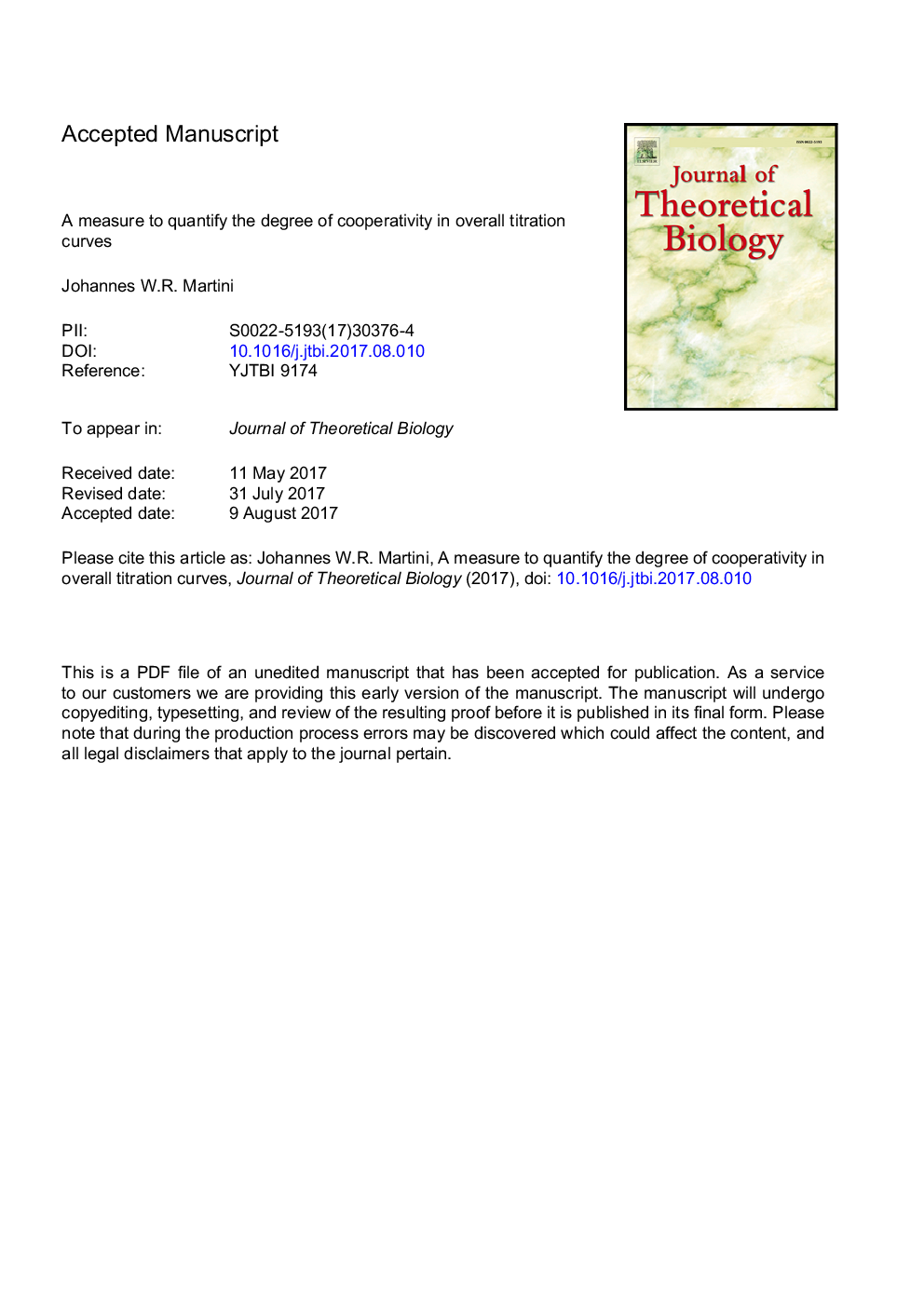| Article ID | Journal | Published Year | Pages | File Type |
|---|---|---|---|---|
| 5760267 | Journal of Theoretical Biology | 2017 | 14 Pages |
Abstract
In the framework of the grand canonical ensemble, different definitions of cooperativity commonly used in the context of ligand binding are not equivalent. A unifying definition is the existence of non-real roots of the binding polynomial. Using this qualitative criterion, an open question is how to quantify the degree of cooperativity. In this work, we introduce a theoretical measure to quantify the degree of cooperativity of a titriation curve. Its definition is based on a minimal energy approach mapping a given binding polynomial to the minimal interaction energy which is required to generate it. We show that the degree of cooperativity can be calculated easily, if the molecule under consideration is assumed to consist of energetically identical binding sites. Moreover, the property of sub-multiplicativity allows us to determine upper bounds for the degree of cooperativity in asymmetric systems. The approach is consistent with the qualitative definition of cooperativity based on the existence of non-real roots of the binding polynomial, and thus helps to put the concept of cooperativity on a solid theoretical ground. It connects macro- and microstates, but takes here also into account that an infinite number of different molecules can cause the same macroscopic ligand binding behavior, which means that the underlying microsystem cannot be uniquely identified based on the titration curve only.
Related Topics
Life Sciences
Agricultural and Biological Sciences
Agricultural and Biological Sciences (General)
Authors
Johannes W.R. Martini,
